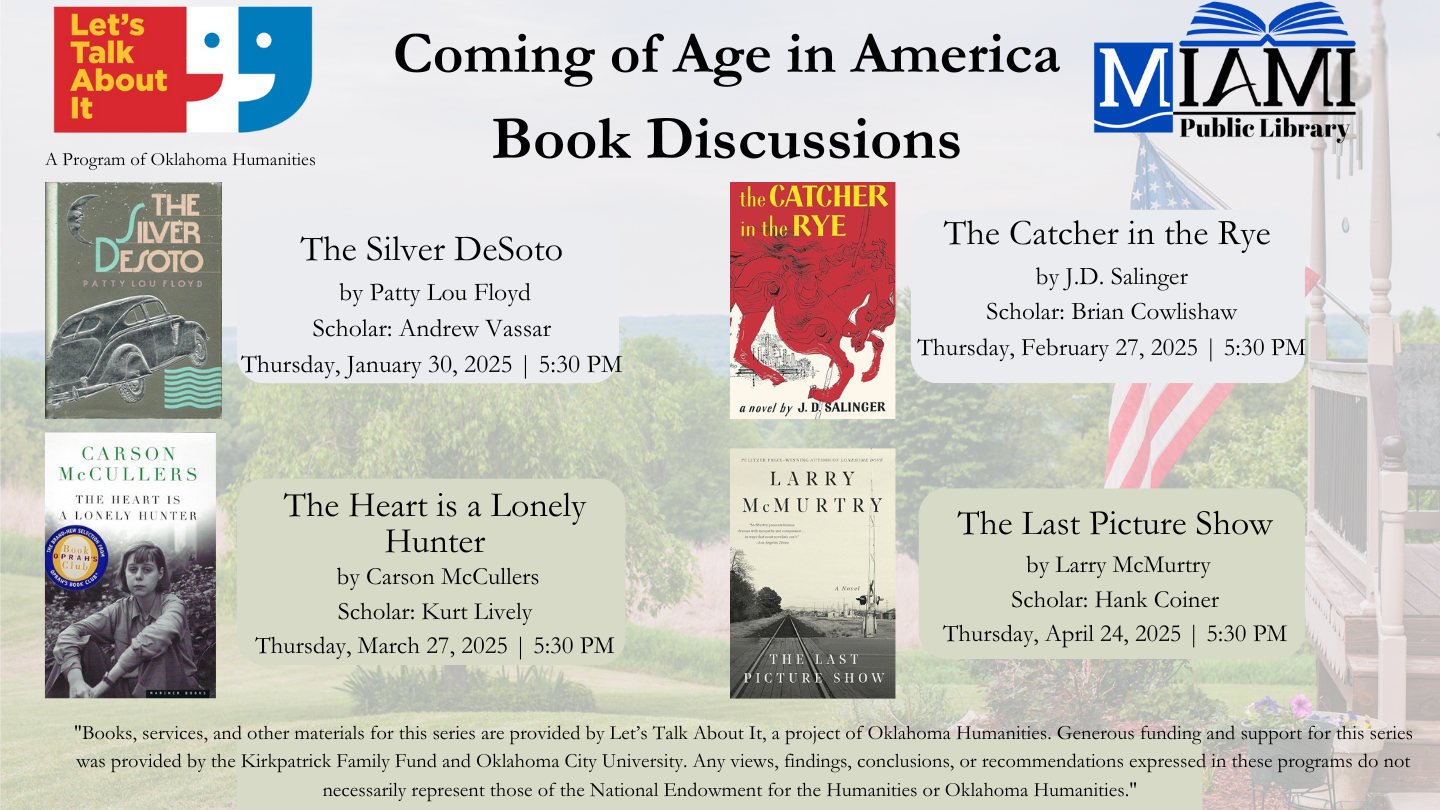Let's Talk About It
The Let’s Talk About It series stimulates vibrant, engaging conversations. Each series includes 4-5 pre-selected books that examine a single theme from multiple perspectives. Food traditions and culture, coming-of-age stories, Oklahoma history, ethnic diversity, and finding hope during desperate times are just a few of the timeless themes that resonate with readers when explored through Let’s Talk About It.
Each program begins with a literary expert giving a 30-40 minute talk, offering a deeper understanding of the text, the author, and the themes related to the book, allowing readers to gain new insight regarding the book before the discussion unfolds.
The expert’s talk inspires the robust dialog that follows, where readers contemplate the thoughts and actions of the characters, consider the intentions of the author, and offer their own unique observations about the literature.

Current Series
For each program, participants pick up a copy of the book about a month in advance, and on the program date, a university professor from Oklahoma leads a discussion.
Coming of Age in America
This sampling of initiation stories portrays young adults facing adult problems and the change that occurs from their confrontations
Books will be available soon and may be picked up in advance at the Miami Public Library circulation desk. Sessions will take place at the library in the upstairs meeting room.* All sessions will begin at 5:30 p.m. The program is open and free to the public. Attendees are asked to fill out a survey at the end of each session.
Call 918-541-2292 for more information.
*Arrangements will be made for virtual attendees on request. Email librarystaff@miamiokla.net to set up.

Title & Date
The Silver DeSoto by Patty Lou Floyd
Thursday, January 30, 2025, 5:30 PM
*Scholar: Andrew Vassar
The Catcher in the Rye
Thursday, February 27, 2025, 5:30 PM
*Scholar: Brian Cowlishaw
The Heart is a Lonely Hunter
Thursday, March 27, 2025, 5:30PM
*Scholar: Kurt Lively
The Last Picture Show
Thursday, April 24, 2025, 5:30 PM
*Scholar: Hank Coiner




